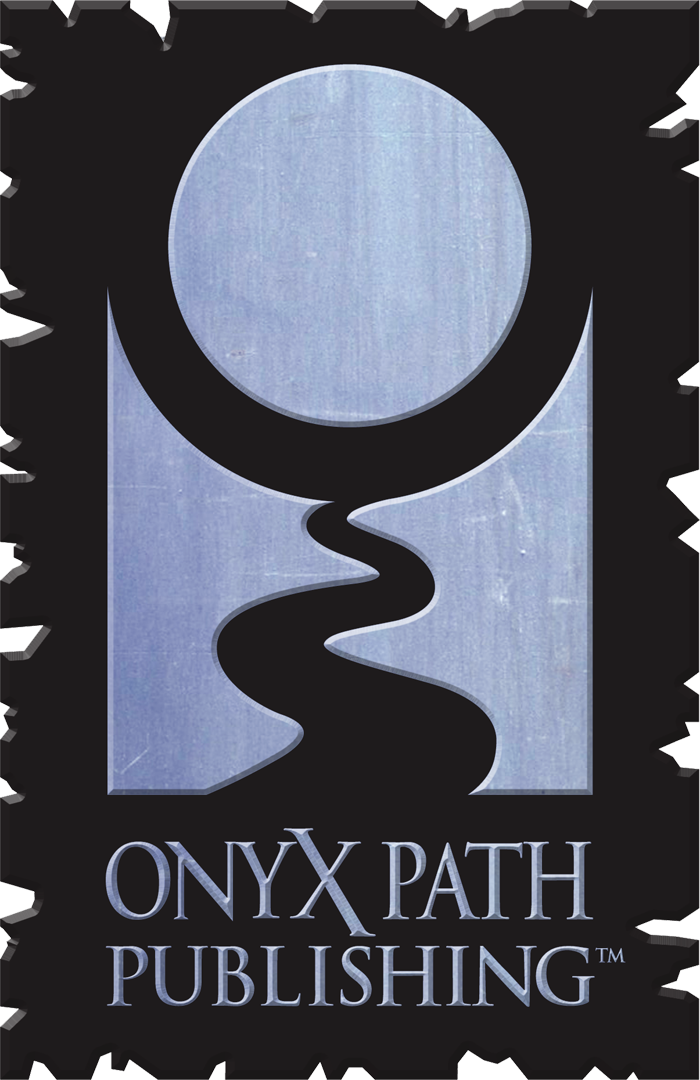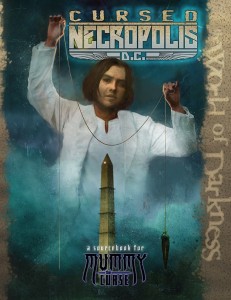Onyx Path’s Month of Nightmares features games, stories, and more to celebrate the spirit of Halloween. Count down the days with us by reading our excerpts, participating in the discussion, or by taking advantage of our special offers leading up to a haunted Halloween.
Cities themselves are works of art. The culture and character of the city are defined both by those who live there and the buildings and monuments they leave behind. Where D.C.’s architecture was touched by the Masons reveals a heavy mix of Georgian, Gothic and Gothic Revival, Modern, and Neoclassical styles, mirroring the national monuments. The Founding Fathers are old enough to be heroes, but young enough for Americans to feel a direct connection, a sense of reverence towards them—worshipped as gods should be. It’s a subtle effect: despite an age measured in a handful of centuries, D.C. feels like a timeless city, a city of men who’ve achieved Apotheosis, heavy under the weight of history but open to the sky.
The subtle energies mastered by the Tef-Aabhi are critical to the magical effect embedded in the city’s design by L’Enfant, the same design mutilated by war and politics and Ellicott. Those who call the city home or depend on it in a thousand different ways are those who characterize its magic. Such dependence stretches far beyond the city’s borders. Even those in the larger area consider themselves Washingtonians; someone living in Silver Spring, Maryland may casually refer to his or her living situation as “D.C.” for simplicity’s sake.
Washington’s an idea as much as a place. What was a sleepy town has transformed into a magnificent reactor, mixing violence and media and money. The subtle magics of the entire human race focus on the idea of the capital of the world’s sole remaining superpower. In turn, that superpower spreads influence and culture over the known world as only one other has before: Irem, when it squatted upon the sands.
But now, the sands are shifting. Washington no longer has the influence it once did; the world has moved on. America faces the rise of China, diffusing global interests in the Middle East, a resurgent Russia, and even itself, polarized and divided politically. The elite still find common cause in enjoying the spoils of rule, even as their bickering turns from partisan to punditry. Their servants struggle to craft policy while the masters battle in the streets and in the air, fury open to the world aside congenial alliances in private. The empire teeters on its edge. Sothis ascends, and with it rise the Arisen of the capital, to once again face down Fate.
They, too, are divided, even as they belong to a club far more exclusive than elected seats. They, too, are seduced by the power outside forces wield over them. The old guard who once walked the same streets as the country’s Founding Fathers find themselves eclipsed by merets with a view of the Judges bordering on heresy. The Khent-henu are lacking in context, memory, and relevance—but not at all in puissance. Sedge’s machine has some control, minions, cults, and a dangerous defiance of the way things have always been done. The city of Washington is history’s largest and most ambitious attempt at relic geometry; the art of arranging heka flows to channel Sekhem and using humanity’s innate magic to create a large scale relic.
Such a monument, conceivable only in the dreams of the Masons, was doomed from the start. But they have succeeded in making the city magnificent, a tremendous exaggeration of power and of history.
It is indeed a monument worthy of Irem.
This passage is from Chapter Two: A City of Pillars of Cursed Necropolis: D.C., and we feel that it shows Mummy at its best — the cyclical faces of empire, the weight of history, the power of not merely time, but of context. Fragmenting memory displaces even the highest and mightiest, and the Arisen are walking, talking exemplars of the same. Mummies are the last remnants of what once the world’s mightiest empire, and as witnesses to the ends of empires, where would they rather be than Washington?
It might be fairly said that Mummy is as much of a game about history as it is about living through (i.e., roleplaying) that history. When you’re talking about mummies, you’re talking about beings who’ve experienced the ages firsthand in a way that other beings never can or will. Part of the reason why we have an entire sourcebook dedicated to the idea (Sothis Ascends) is because juxtaposing the ancient and the modern is something the game can do very well, and both of its signature settings needed to be similarly appropriate and viable arenas in which to do the same.
Washington is perhaps ideal for exploring some of these central ideas and themes, and as noted in the Introduction, narrative explorations that revolve around memory as metaphor for the repetition of historical mistakes could scarcely find a better venue than D.C. This passage highlights nicely the notion of the sun “setting” on the city in both worlds, and in so doing, captures the fracturing nome’s political situation in direct terms. (It also teases one of the core background plots of the setting, and that stuff is always good for an illustrative blurb.)
The PDF of Cursed Necropolis: D.C. is on sale for 50% off for TODAY ONLY!

